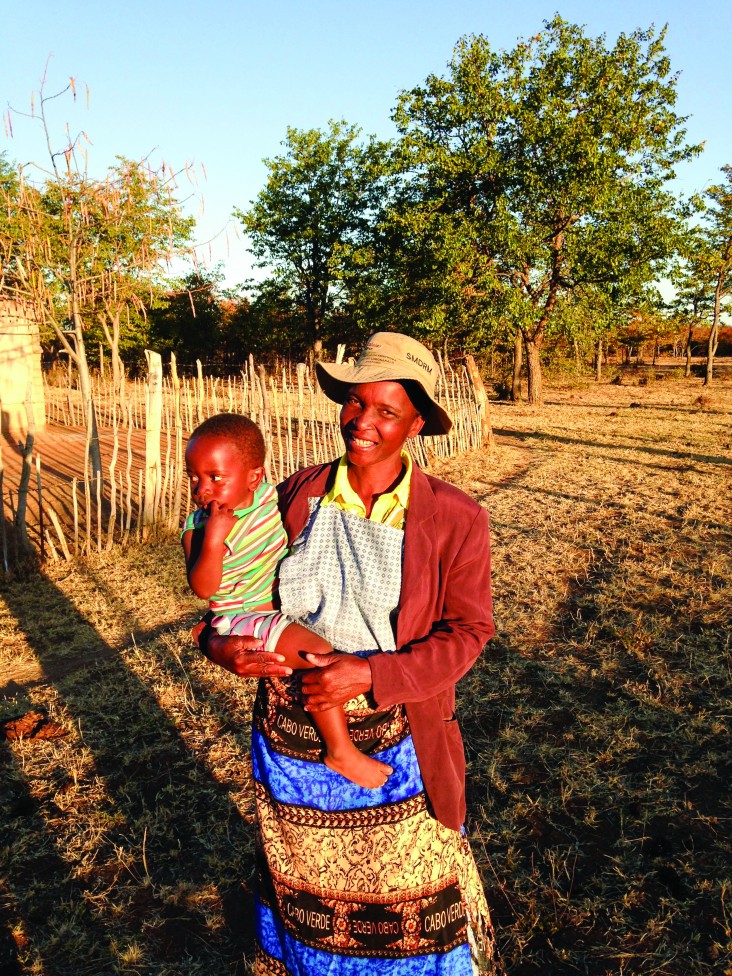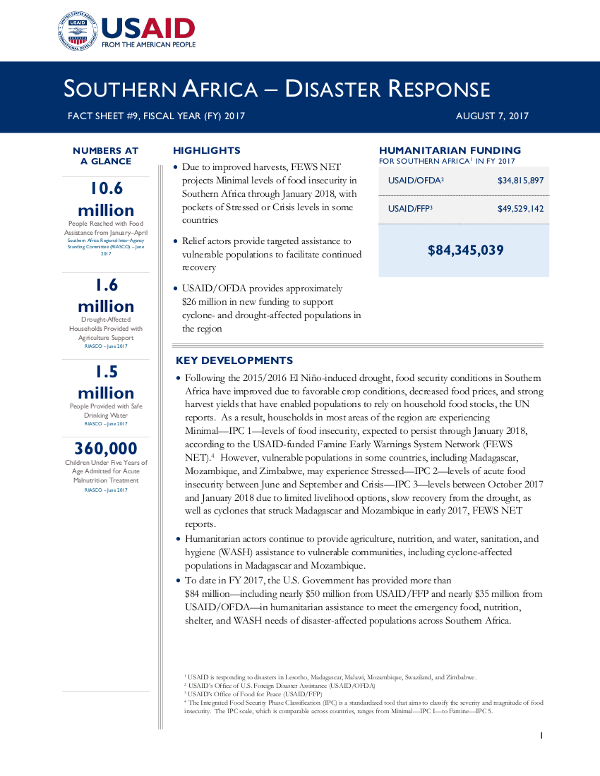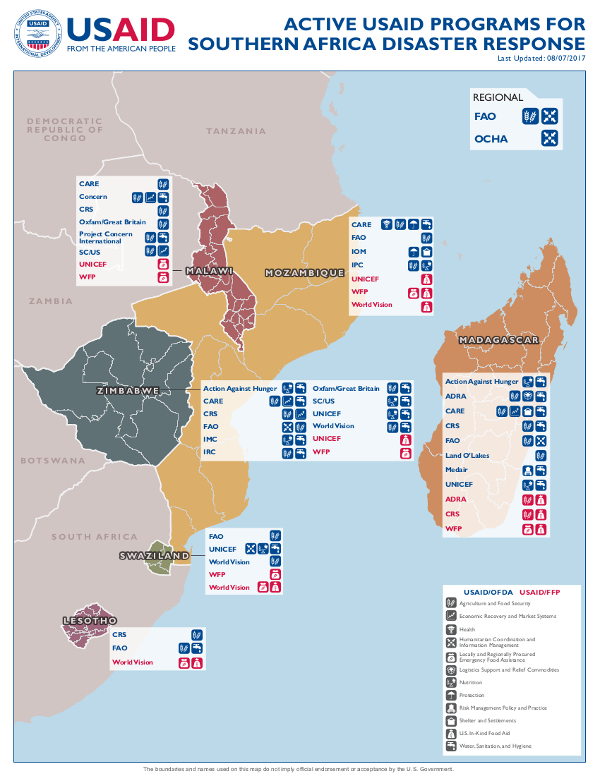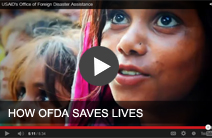- What We Do
- Agriculture and Food Security
- Democracy, Human Rights and Governance
- Economic Growth and Trade
- Education
- Ending Extreme Poverty
- Environment and Global Climate Change
- Gender Equality and Women's Empowerment
- Global Health
- Water and Sanitation
- Working in Crises and Conflict
- Disaster Assistance
- Political Transition Initiatives
- Conflict Mitigation and Prevention
- Countering Violent Extremism
- Disaster Risk Reduction
- Peacebuilding and Reconciliation
- Providing Safe & Secure Environments for Development
- Recovering From Crisis
- Resilience
- Tech Challenge for Atrocity Prevention
- World Humanitarian Day
- U.S. Global Development Lab

Latest Southern Africa
Fact Sheet
Southern Africa Map - 08-07-2017 ![]() (pdf - 599k)
(pdf - 599k)
Key Developments
USAID’s Office of U.S. Foreign Disaster Assistance (USAID/OFDA) is responding to disasters in Lesotho, Madagascar, Malawi, Mozambique, Swaziland, and Zimbabwe.
Due to increased planting and favorable rains in Zimbabwe, the UN Food and Agriculture Organization projected an above-average maize harvest in 2017, with a significant increase in maize yields from 2016. These favorable conditions will likely contribute to Minimal levels of food insecurity for many populations through September, the USAID-funded Famine Early Warnings System Network reports; however, households in southern Zimbabwe face declining water supplies, which will limit agricultural production and livestock pasture.
Some households in Zimbabwe will have exhausted food stocks by September and will experience constrained livelihood options, which may lead to Crisis levels of food insecurity for these populations between October 2017 and January 2018. Food insecurity during the 2018 lean season will likely be less severe than in 2017, according to the Zimbabwe Vulnerability Assessment Committee (ZimVAC). The ZimVAC projects that nearly 1.1 million people in rural Zimbabwe—approximately 11 percent of rural households—will be food-insecure during the peak of the lean season from January–March 2018, compared to nearly 4.1 million food-insecure people during the same period in 2017.
USAID's Office of U.S. Foreign Disaster Assistance (USAID/OFDA) is responding to a regional drought in Southern Africa. Please visit our webpage for additional information.
Background
Zimbabwe is experiencing its second consecutive year of drought, with conditions exacerbated by the 2015-2016 El Niño climatic event. Both the 2014/2015 and 2015/2016 agriculture seasons in Zimbabwe experienced insufficient, poorly distributed, and erratic rainfall across much of the country. Additional factors—including a poorly performing economy, reduced employment opportunities, and disease outbreaks among livestock—have aggravated food security needs.










Comment
Make a general inquiry or suggest an improvement.